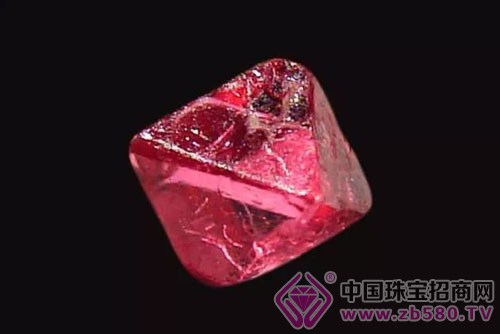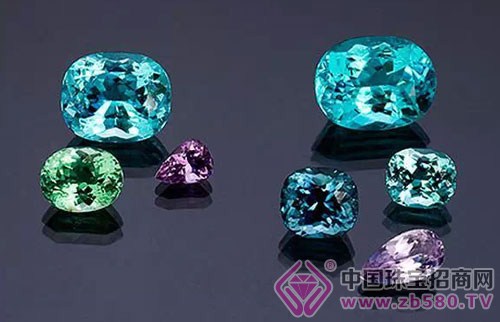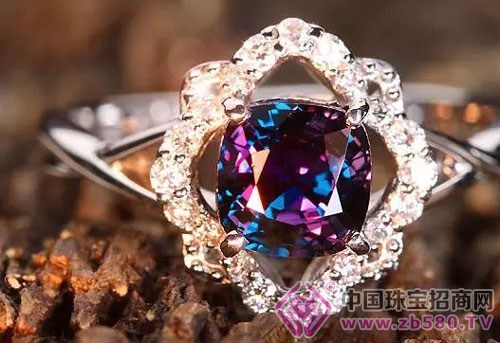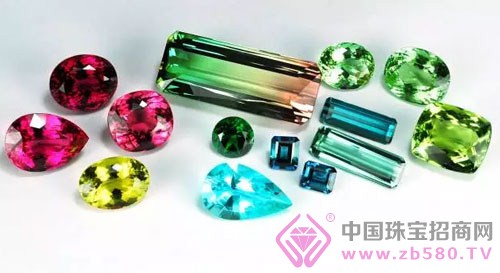You must understand: the terminology of gemstones
Fracture: Under the action of external force, the fracture surface of gem minerals that does not occur in a certain crystal direction is called a fracture. The fracture is different from the cleavage surface, which is generally an uneven curved surface. According to the shape of the fracture, the fractures are divided into the following categories: shell-shaped fractures, uneven fractures, cracked fractures, and ladder-shaped fractures.
Multi-color directionality: In the colored gem crystals of optically inhomogeneous bodies, due to the difference in particle arrangement in all directions of the crystal, the polarization absorption of light in different directions is different, the selection absorption is also the same, and the chromaticity is characteristic. . Non-homogeneous colored gemstones may have dichroism or trichromaticity.

Fluorescence/phosphorescence reaction: Some jewels and jade are exposed to energy (such as heat, violet light, ultraviolet light, X-ray, cathode ray, etc.), causing the gemstone to emit visible light. Luminescence is called phosphorescence.
Gloss: refers to the ability of the surface of a gem to reflect visible light. The gemstone gloss intensity depends on the refractive index of the gemstone itself and the surface facet finish. Gemstone gloss can be divided into: metallic luster, diamond luster, glass luster, grease luster, silk luster, pearl luster, and the like.

Splitting (cleavage): The property of a crystal that can be broken along a crystal plane or a special direction of crystallinity, that is, a mesh in a certain direction in a crystal lattice, is called cleavage when struck by an external force. The parallel, smooth rupture surface along the cleavage is called the cleavage plane (cleavage plane).
Toughness: The ability of an object to resist wear, stretch, and press-resistance. It can also be called the ability to resist cracking. The so-called high toughness means that the object is difficult to break.
Dispersion: When white light passes through an inclined plane of a transparent substance, it is decomposed into its constituent wavelength. It is usually expressed by the difference in refractive index measured by the light of the Fraunhofer spectrum B (B = 687 nm) and the G (G = 430.8 nm) line. Commonly known as the fire.

Transparency: refers to the extent to which an object allows visible light to pass through. Can be divided into transparent, translucent, sub-transparent, sub-transparent, opaque and so on.
Stability: The ability of a gemstone to resist physical or chemical changes caused by light, heat or chemical reactions.

Refractive Index and Birefringence (RI and DR): Refraction refers to the change in the direction of propagation of light as it enters another medium of different optical densities (unless the incident ray is at an angle of 90° to the interface). The ratio of the sine of the angle of incidence to the sine of the angle of refraction is a constant, and this value is called the "refractive index." A homogeneous gemstone is monorefracted because it is optically isotropic. An anisotropic gem has two refractive indices called birefringence. The largest numerical difference between the two indices of refraction is called birefringence.
Absorption spectrum: Pure white light is a continuous spectrum from red to purple, but when white light passes through a colored gemstone, a certain color or wavelength can be absorbed by the gemstone, which leads to one or several discontinuities in the white light spectrum. Appears as a dark or dark band. Many gemstones exhibit characteristic patterns that absorb bands or lines in the visible spectrum, and the complete pattern is called the "absorption spectrum."
Swimwear Fabric,Swimsuit Fabric,Swimsuit Material,Bathing Suit Material
shaoxing wenguang knitting co.,ltd , https://www.wenguangknitting.com